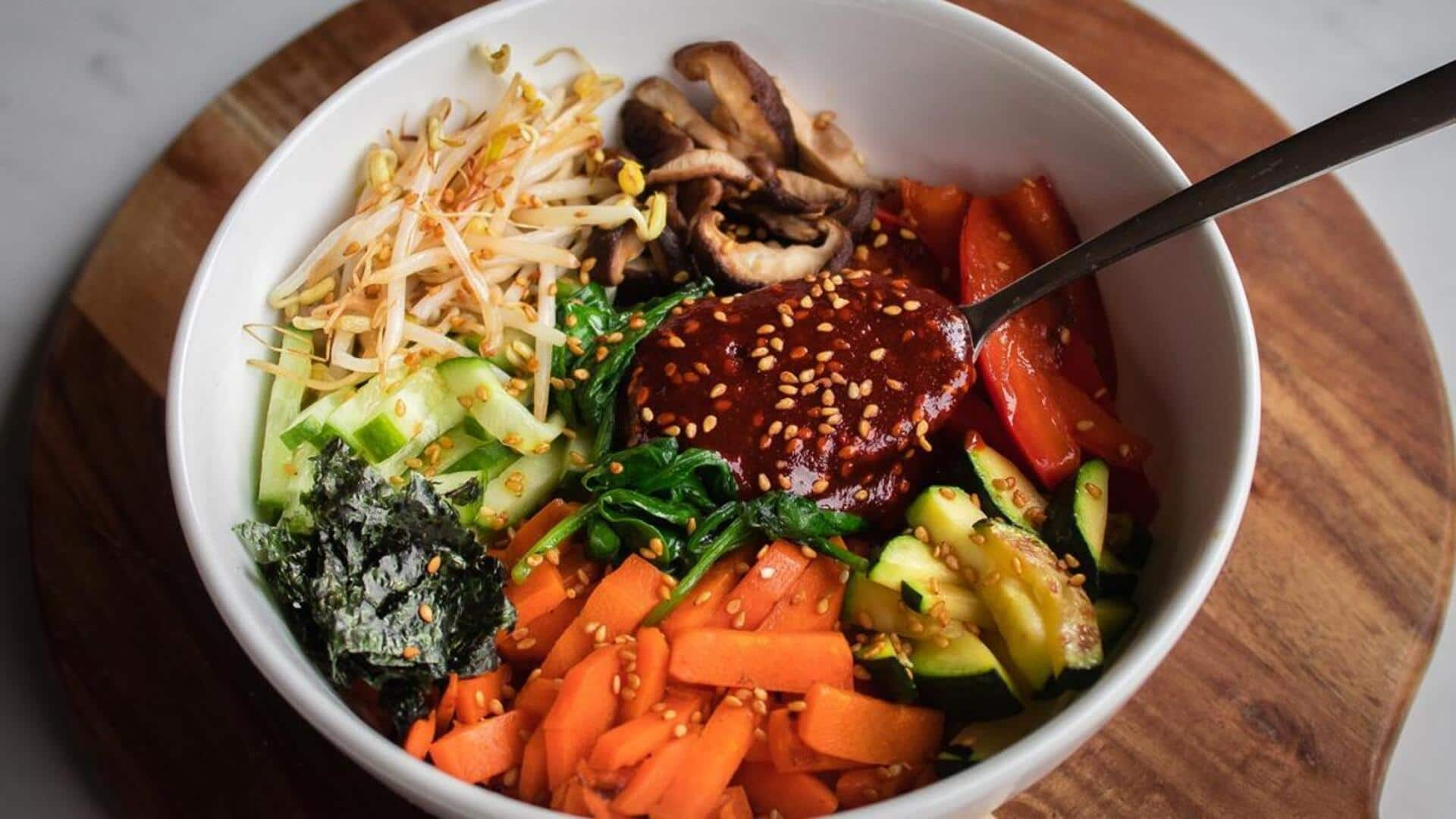
Make vegan Korean bibimbap in 4 simple steps
What's the story
Bibimbap, a traditional Korean dish, is celebrated for its vibrant colors and diverse flavors. Originating from Korea, it has a rich history and cultural significance. Traditionally, it's a bowl of warm white rice with sauteed vegetables, chili pepper paste (gochujang), soy sauce, or fermented soybean paste (doenjang). The vegan version omits animal products, welcoming everyone to enjoy. Let's get cooking!
Ingredients list
Gather the following ingredients
To make vegan bibimbap, you will need two cups of cooked short-grain rice, one cup of spinach, one cup of julienne carrots, one cup of sliced mushrooms (shiitake or button), one small zucchini sliced into thin strips, two tablespoons of soy sauce (divided), two tablespoons of sesame oil (divided), salt to taste, one tablespoon of gochujang (Korean chili paste), and sesame seeds for garnish.
Step 1
Preparing the vegetables
Begin by blanching spinach in boiling water for one minute, then cool it in ice water. After draining, season with half a tablespoon each of soy sauce and sesame oil. Saute carrots, mushrooms, and zucchini with a pinch of salt in separate pans over medium heat until tender yet crisp. Set these aside for later use.
Step 2
Assembling the bibimbap
Divide the cooked rice between two bowls to form the base. Then, neatly arrange the spinach, carrots, mushrooms and zucchini on top. You can place these vegetables in sections or mix them, based on your preference. This step is crucial for bibimbap's visual appeal, highlighting its variety of colors and making the dish visually stunning and inviting.
Step 3
Adding flavor
To flavor your vegan bibimbap, combine one tablespoon of gochujang with water to a slightly runny yet thick consistency for drizzling. Adjust the heat by adding more water if needed. This step is crucial for achieving the dish's signature spicy taste, allowing you to customize the spiciness according to your preference, ensuring a flavorful and enjoyable meal.
Step 4
Final touches
Drizzle the remaining sesame oil over each bowl, and then sprinkle sesame seeds on top for an added nutty flavor and crunch. Your vegan Korean bibimbap is now ready to enjoy! Before eating, thoroughly mix everything together. This important step ensures that every bite is infused with the rich flavors and diverse textures of the dish, making your meal visually appealing and deliciously satisfying.